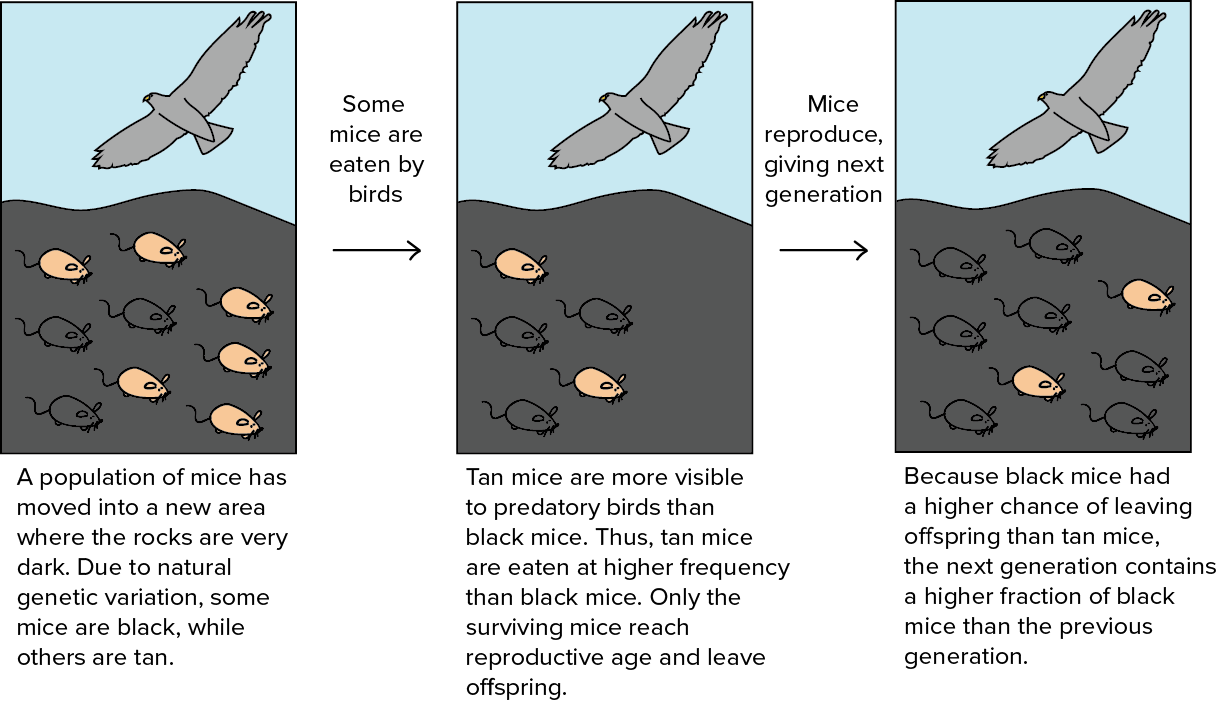Natural selection is the process by which organisms with desirable traits survive and reproduce more successfully than other organisms in their environment. The theory of natural selection was first proposed by Charles Darwin in his book On the Origin of Species, which was published in 1859. This process is one of the main mechanisms of evolution and is responsible for the diversity of life that we see on Earth today. Natural selection is a result of the interaction between the environment, the organisms’ characteristics, and their ability to reproduce.
The idea of natural selection is simple; organisms that are better adapted to their environment will have a better chance of survival. As a result, they will be more likely to reproduce and pass on their advantageous traits to their offspring. This means that, over time, the population will become more adapted to the environment, as the traits that are beneficial will be passed on more often than those that are not.
Examples of Natural Selection
Natural selection can be observed in a variety of ways. The most commonly known example is the case of the peppered moth. This species of moth was originally a light-colored variety with light-colored spots, which helped it to blend in with its light-colored environment. However, due to the industrial revolution, the environment changed and became more polluted with soot, making the light-colored moths more visible to birds and other predators. As a result, the darker-colored variety of moths, which was better adapted to the new environment, became more successful in reproducing and passing on their genes.
Another example of natural selection is the adaptation of organisms to the changing climate. For example, some species of birds have evolved to migrate to different areas in order to find food during the winter. Other species of birds have evolved to have thicker feathers in order to stay warmer in the cold temperatures. These adaptations are a result of natural selection and demonstrate how organisms are able to adapt to their environment in order to survive.
How Natural Selection Works
Natural selection works by favoring individuals with traits that are beneficial to their environment. For example, if a certain species of bird is living in an environment with limited food sources, the birds with longer beaks will be able to access more food sources and, as a result, will be more likely to survive and reproduce. This means that the longer-beaked birds will pass on their genes more often than the shorter-beaked birds, and, over time, this trait will become more dominant in the population.
The same process can be applied to other traits. For example, a certain species of fish may live in an environment with limited food sources, so the fish with faster swimming speeds will be able to access more food sources and, as a result, will be more likely to survive and reproduce. This means that the faster-swimming fish will pass on their genes more often than the slower-swimming fish, and, over time, this trait will become more dominant in the population.
Benefits of Natural Selection
Natural selection can be beneficial to the environment in a variety of ways. By favoring individuals with traits that are beneficial to their environment, natural selection can help ensure that the population remains well adapted to its environment. This, in turn, helps to maintain the balance of nature and ensure that species are able to survive and thrive in their environment.
In addition, natural selection can also help to reduce the spread of diseases by favoring individuals with traits that are resistant to certain diseases. For example, a certain species of fish may be more resistant to a certain type of disease, which means that the fish with this trait will be more likely to survive and reproduce. This, in turn, will reduce the spread of the disease within the population.
Drawbacks of Natural Selection
Despite the many benefits of natural selection, there are also some drawbacks. One of the main drawbacks is that natural selection can take a long time to produce results. This is because the beneficial traits must be passed on from one generation to the next in order for them to become more dominant in the population. This means that it may take many generations before the population is well adapted to their environment.
Another drawback of natural selection is that it can lead to the elimination of certain traits or species. This is because only the organisms with the most beneficial traits will be able to survive and reproduce, while those with less beneficial traits may be eliminated from the population. This can lead to the extinction of certain species or the loss of certain traits, which can have a negative impact on the ecosystem.
Conclusion
Natural selection is one of the main mechanisms of evolution and is responsible for the diversity of life that we see on Earth today. It works by favoring individuals with traits that are beneficial to their environment, which can help to ensure that the population remains well adapted to its environment. However, natural selection can take a long time to produce results, and it can also lead to the elimination of certain traits or species. Overall, natural selection is an important process that helps to maintain the balance of nature and ensure that species are able to survive and thrive in their environment.

